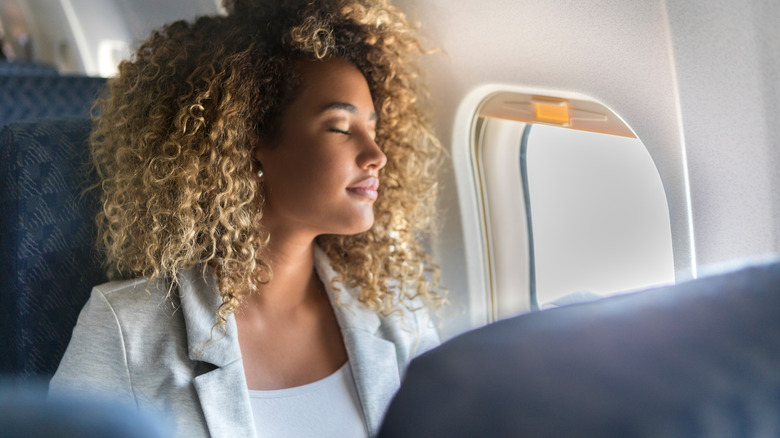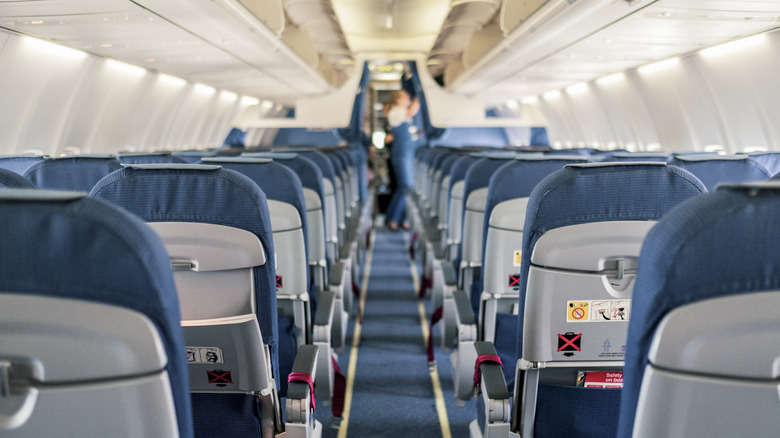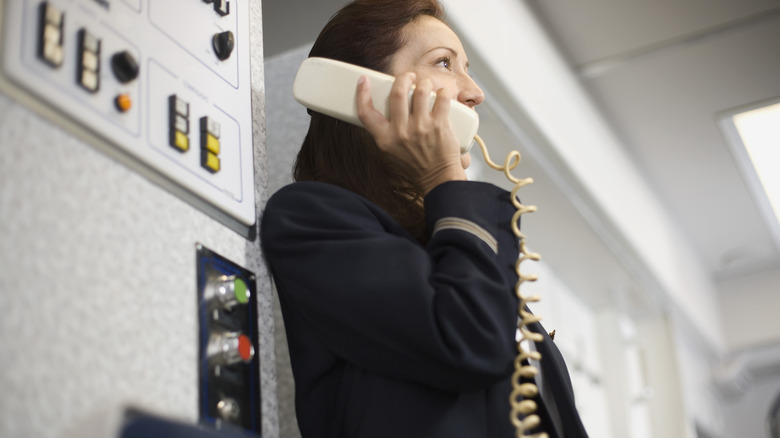Think Twice About Leaning In Your Seat During Takeoff
When you hop on a plane — whether for a short local flight or a transatlantic getaway — the first thing you're thinking about is getting comfortable, right? That probably means slipping your shoes off, sliding your headphones on, and reclining your seat back instantly. But here's the catch: having your seat upright during take-off and landing is actually mandated by law. Yeah, you read that right.
According to the Code of Federal Regulations, aircraft are strictly prohibited from taking off or landing until all passengers aboard have their seats in the upright position. And while you might find the request annoying or unnecessary, these rules aren't just about spoiling your travels or interrupting your moment of relaxation. They're about keeping you, other passengers, and the cabin crew safe in an emergency. Even though it might seem inconvenient, especially if you're just trying to enjoy some sleep, this little detail can make the difference between a smooth journey and a potential risk.
Reclining your seat can be a safety hazard
During an emergency, every second matters, and the more efficiently everyone can move, the better. With this in mind, the upright position during takeoff and landing isn't a comfort feature; it's a safety design.
As reported by the Flight Safety Foundation, takeoff and landing are statistically the most dangerous parts of a flight, with more than half of all fatal and non-fatal aviation accidents happening during these times. And trust us, nobody wants to be part of this statistic.
That said, when you pop your seat upright, you do more than just make room for the meal cart. You're also reducing the risk of head injuries from sudden movements, making your seat sturdier in heavy turbulence, and maximizing the space. But this goes beyond just prepping for emergencies or crash scenarios — it's also helpful in more common situations. Having your seat upright can also help combat motion sickness and kick those queasy feelings to the curb by allowing you to zero in on a stationary spot straight ahead.
When in doubt, listen to the flight attendants
The same rationale applies to other seemingly minor instructions you hear repeatedly aboard a flight. You know, things like securing your tray table, tucking away bags beneath the seat in front of you, locking the overhead compartment, and even retracting those nifty in-flight entertainment screens. While these requests may feel like a nuisance, they all serve a larger purpose beyond simply adhering to protocol. Your tucked bag may give the person next to you a bit more legroom, and your stowed tray table may ease passage for a fellow passenger trying to reach the aisle to the bathroom.
These, together with practicing basic seat reclining etiquette once you've hit cruising altitude, can help contribute to the overall comfort and efficiency of the travel experience for everyone on board. So next time the flight attendant makes that announcement, remember — it's just as much about your safety and comfort as it is about following the rules.


